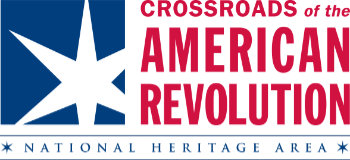Biography People
Theodosia Prevost Full Biography
I was a fifth generation American born in 1746 to Ann Bartow, the widow of Theodosious Bartow who died at the age of 34 while my mother was pregnant with me and for whom I was named. My mother married British army Captain Philip De Visme in 1751 and by 1768 I had five half brothers and sisters. Growing up I received an extensive education at home and in 1763, when I was 17, I married British army officer James Marcus Prevost in New York City.
My husband served in the army throughout the French and Indian War and in 1767 purchased land in Bergen County. We named our home The Hermitage, after Rousseau’s cottage in France, and our five children grew up there. When the Revolution broke out most of my relatives wanted to stay loyal to Britain, although some supported the fight for independence. When James was called back to active duty in the Royal American Regiment in 1776 I had to take charge of our home, along with our five children, my mother, and my teenage halfsister. Life became very difficult as I figured out how to survive the civil war in Bergen County, as well as the war for independence. I was in an unusual and difficult situation because of my husband’s profession and had to work hard to keep possession of my property. I welcomed leading patriot military and government officials into my home, where I entertained them as hostess and conversationalist. My guests debated political theories, philosophy, and religion and I encouraged the writing of poetry. In the Bergen County civil war, we were not attacked by Patriot forces because we had no men living with us who supported the British. On the other hand, the Loyalist forces did not threaten us because our land was owned by a British officer.
Because the law said a married woman took on the legal identity of her husband, our land became subject to confiscation by the Patriots. Some Patriots even wanted to send me and my family to New York to live behind British lines as Loyalists and then take our property. Nothing came of these efforts and in July 1778, after the Battle of Monmouth, I learned that General Washington and his troops would be in my area on their way to White Plains in New York. I invited him to stay at my house, noting that the accommodations were the “most commodious in the area.” Washington accepted my offer and stayed with us for four days. One of his officers wrote that: “At Mrs. Prevost’s we found some fair refugees from New York who were on a visit to the lady of the Hermitage. With them we talked and walked and laughed and danced and gallanted away the leisure hours of four days and four nights.”
1778 was also the year I met Aaron Burr. His health had been impaired by the Monmouth campaign and heavy work afterwards. Aaron spent some time recuperating at my home, but after he went back on active duty his health continued to be a concern and he retired from the army. He and I kept in touch through correspondence for several years and developed a fondness for each other. During 1778, James was stationed in the West Indies and then in British Florida before assignment to the southern American colonies where he served for a short period as governor of Georgia after the capture of Savannah in December. I sent my two sons, ages 9 and 11, to join their father and begin their life in the British army.
At the end of 1778, the New Jersey Legislature passed a law authorizing confiscation of Loyalist property and my home became a priority target because of my husband’s successes in the south. My efforts to gain the trust of important people paid off and many of them actively supported me. Although there were repeated efforts to take my land, none of them were successful. Then, in October 1781 James died while on duty in Jamaica and this ended all efforts to take our lands. It also allowed my relationship with Aaron to advance towards marriage. Our correspondence continued and I wrote him in May 1781 from his sister’s house in Connecticut that, “Our being the subject of much inquiry, conjecture, and calumny, is no more than we ought to expect. My attention to you was ever pointed enough to attract the observation of those who visited the house.” On July 2, 1782, at age 35 and with five children, I married 25-year-old Aaron at the Hermitage. After the wedding we settled in Albany, New York where Aaron developed his law practice and eventually went into politics. I died of stomach cancer on May 18, 1794, at the age of 48 – long before Aaron became such a controversial political figure.
FURTHER SOURCES
See the website for The Hermitage Museum at www.thehermitage.org. This site has extensive information.
Bischoff, Dr. Henry, “A Resourceful Woman in Revolutionary Bergen County: Theodosia Prevost at the Hermitage,” in Carol Karels, The Revolution in Bergen County: The Times that Tried Men’s Souls (Charleston, South Carolina: The History Press, 2007).
Biographies of Aaron Burr often contain information about Theodosia Prevost. See for example:
Davis, Matthew L. Memoirs of Aaron Burr with Miscellaneous Selections from his Correspondence. Vol 1 (New York: Harper and Brothers, 1837). This is actually an early biography by a person who knew Aaron Burr and was asked to write the “memoirs” by Burr. Note the introduction for the author’s explanation of the process and his attempts at fairness and accuracy.
Isenberg, Nancy, Fallen Founder: The Life of Aaron Burr (New York: Viking Penguin, 2007).
